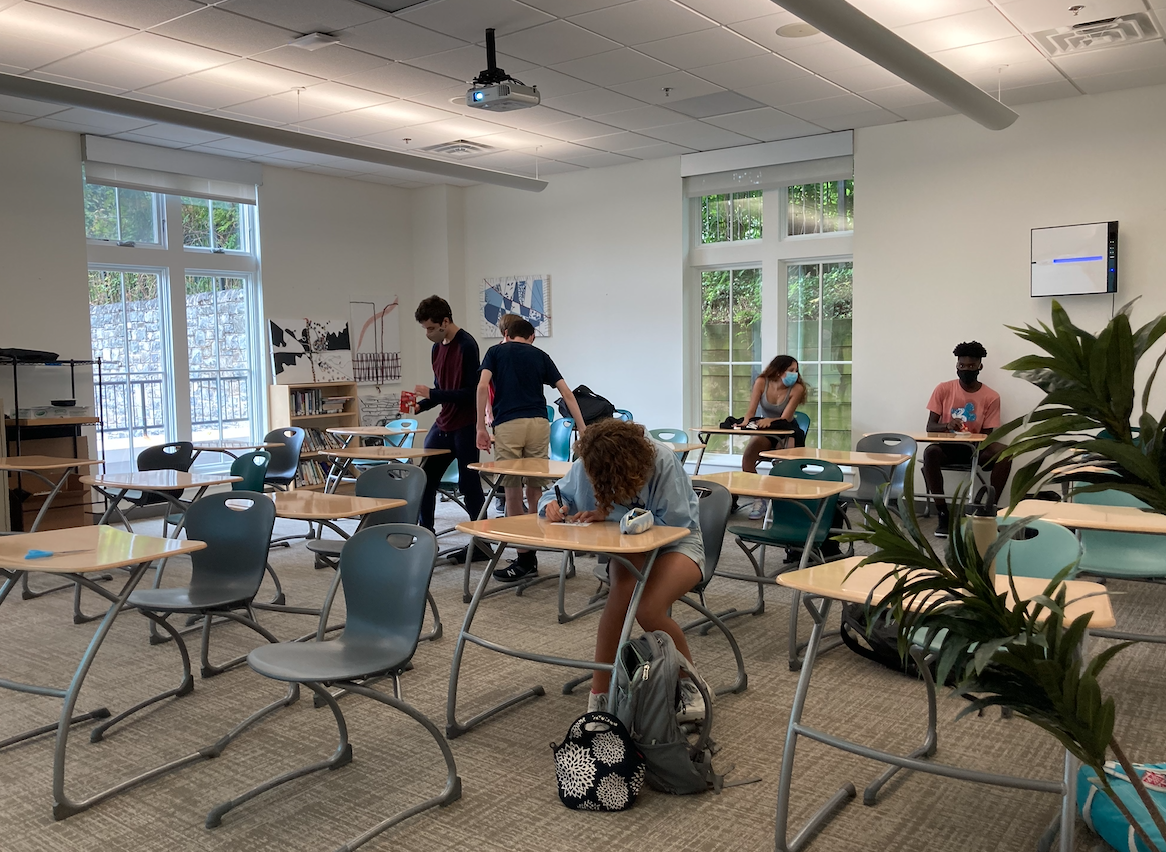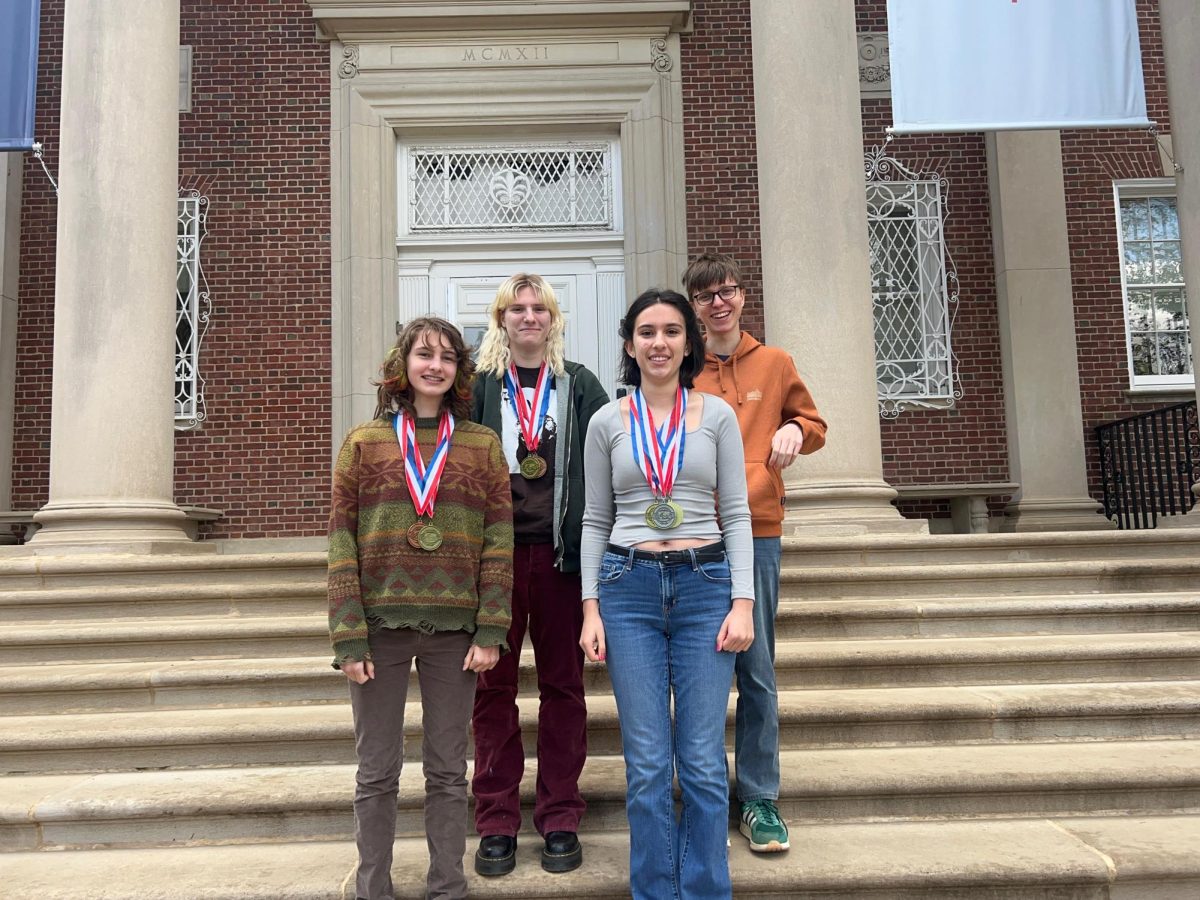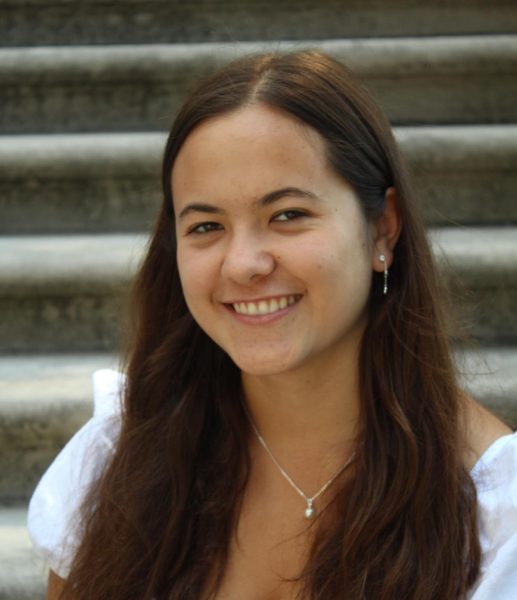The school day starts for most students with an early alarm and the morning rush to get to school on time. By 8:15 a.m., they are sitting in a classroom for period one. Meanwhile, students at home get up at their own pace, in no rush to get to a classroom or leave the house. These students have COVID-19, and have no other option.
WIS is not offering a virtual learning option for students with COVID-19, so students have worked to stay caught up with their classes independently in a remote setting. The school requires students to quarantine for eight days after a positive test or appearance of symptoms, and they may return if they receive a negative test after the first five days.
Senior Natalie Sanchez tested positive for COVID on Jan. 4, during Winter Break. She tested negative on Jan. 8, the day before school restarted, but had to remain at home because WIS was still requiring a 10 day quarantine because of DC Health guidelines.
“I was negative at the time that I was missing school, so it seemed counterproductive,” Sanchez said.
Sanchez missed 3 days of school. To keep up with schoolwork as much as possible, she texted her friends about what they did, and FaceTimed into class.
“For one of my classes, I was going to have a test that week, so I didn’t want to miss review,” she said. “So what I would do is FaceTime my friends and just listen to the classes, even though I wasn’t able to participate and ask questions, but just so I wouldn’t miss content.”
Sanchez said she was a lot more productive while working from home. She worked all day, since she had just had all of Winter Break to relax. However, she did fall behind a little in some of her classes.
Upper School Science teacher Trish Beck has only had one to two students out from each of her classes at a time, so there hasn’t been too much overall class disruption. She has been letting students FaceTime, like Sanchez, into class to listen, especially during lectures.
“The school’s a little late in trying to come up with policies for [students quarantining], because it’s such a new thing,” Beck said. “So at first [the school was] kind of saying, ‘no, don’t do [FaceTime].’ But now it’s like, ‘help people however you want.’”
She also has lessons from last year recorded that she can send students. Recently, teachers had a tech training meeting where they were taught how to audio record their classes and send them to students who are quarantining.
Senior Olivia Matuschek tested positive for COVID on Jan. 16, after a week of being at school. Her teachers were very accommodating, and she had more time to work on her assignments and got to work at her own pace.
“I know that, obviously, I’m not going to learn the full extent of the content that was taught in school,” Matuschek said. “But at least I have a good idea because of my teachers sharing it with me and on OnCampus assignments.”
Sophomore Mia Lahrech’s experience staying at home was somewhat unpleasant, partly due to her severe COVID symptoms which made it hard for her to concentrate on her assignments.
“There [were] some days where my brain fog was so bad where all I would do is stay in bed and eat bags filled of cough drops,” Lahrech said.
Lahrech feels that teachers should be more understanding towards students who are symptomatic. She did her schoolwork by checking OnCampus and Google Classroom. Her assignments started coming in at around 11:30 and she finished her schoolwork at 2 p.m.
However, while in quarantine, she would’ve appreciated some sort of virtual learning. “It’s really infuriating and kind of irresponsible,” she said. ”I’ve got finals that I have to work on. It’s very hard to figure out what’s going on.”
It is better for the school to be either completely virtual or in-person, according to Matuschek, who is sympathetic to why WIS is not offering virtual learning options for any students.
“I know that especially [for] a lot of people in my grade, at times it can be really overwhelming and it would be really nice to take one or few days off to just go virtual, even if you don’t have COVID,” Matuschek said. “From that perspective, I understand that they want to keep school open and to not have hybrid.”
Sanchez, on the other hand, would have preferred WIS to offer a virtual option, especially since students have to miss a lot of class time.
“If WIS put specific rules in place, they would definitely be able to offer the option and it would work towards their goal of being safe,” Sanchez said.
A virtual option would be more disruptive to the overall learning, according to Beck. She also said that the school is worried about not having enough bandwidth for every class to be on Zoom.
“I’m not going to make the whole class do a distance learning lesson and not do something interactive there because we want to include the couple of people that are home,” Beck said.
As of now, Beck believes that the current method of helping students individually is working. But if more students are away, then a more substantial solution will need to be put in place.
Matuschek thinks that WIS needs to have a proper solution in place for students who have to miss exams, especially finals. She did not miss any exams and was a lot less stressed with the extra time she had at home.
“As long as your teachers are able to offer a sustainable solution while you’re at home, and to allow you to learn from home, that makes it possible to not have to have an online option,” Matuschek said.
Upper School Math Teacher Neil MacDonald has had four students in quarantine. According to MacDonald, the best solution for students at home would be for teachers to get on a call with the student at home as well as teach the class to the students present.
MacDonald said he did this for a particular student. “The call wasn’t totally clear, but it was better than nothing,” he said.
However, there are multiple problems involving this method of teaching, namely bandwidth problems. MacDonald’s advice for students at home is to follow the school day routine and reach out to teachers over email if they need help.
When Sanchez returned to school, she was very excited to be back after a month of not being at school. “I felt super safe,” she said. “Especially knowing that I had been negative for the past five days. So it felt like I was safe and that other people were safe. It didn’t feel like a hazard to anyone.”
Sanchez strongly suggests other COVID infected students to reach out to friends and teachers to stay as up to date with their work as possible. However, all of this should only be done if students are feeling fine and able to do so.
“I think [at] the beginning of me being sick, I pushed myself too hard,” Matuschek said. “I was still trying to keep up with all my work, but I was still having symptoms. Now I’m actually feeling better, and realizing that I should give myself a break.”
By Naomi Breuer and Gabriela Leon-Acosta



































































